Reference vs. custom graphics cards: Which should you buy? - blackwastain
adam_patrick_murray@idg.com Should you opt for a blower-manner "reference" cooler or a custom cooler for your graphics card? PCWorld GPU expert Brad Chacos breaks down the pros and cons of each.
While our guide to the best nontextual matter card game can help you identify which hardware works best within your budget, only knowing that you want to buy, enounce, a Radeon RX 5700 is solitary the start of the process. You'll ascertain endless models for sale for every graphics card, ranging from menial "reference" card game planned by AMD or Nvidia themselves, to highly customized options boxing bespoke cooling solutions and special features by "board board" partners like EVGA, Lazuline, Asus, Gigabyte, MSI, and more.
So should you buy a reference card operating theater a custom graphics card when you'Re on the hunt for a new GPU? The short answer is most—simply not every last—people should steal a customized model.
For the yearner answer, as well equally a look at the niche cases where you might be ameliorate suited with a reference video bill of fare, here's a high-altitude breakdown of the pros and cons of each.
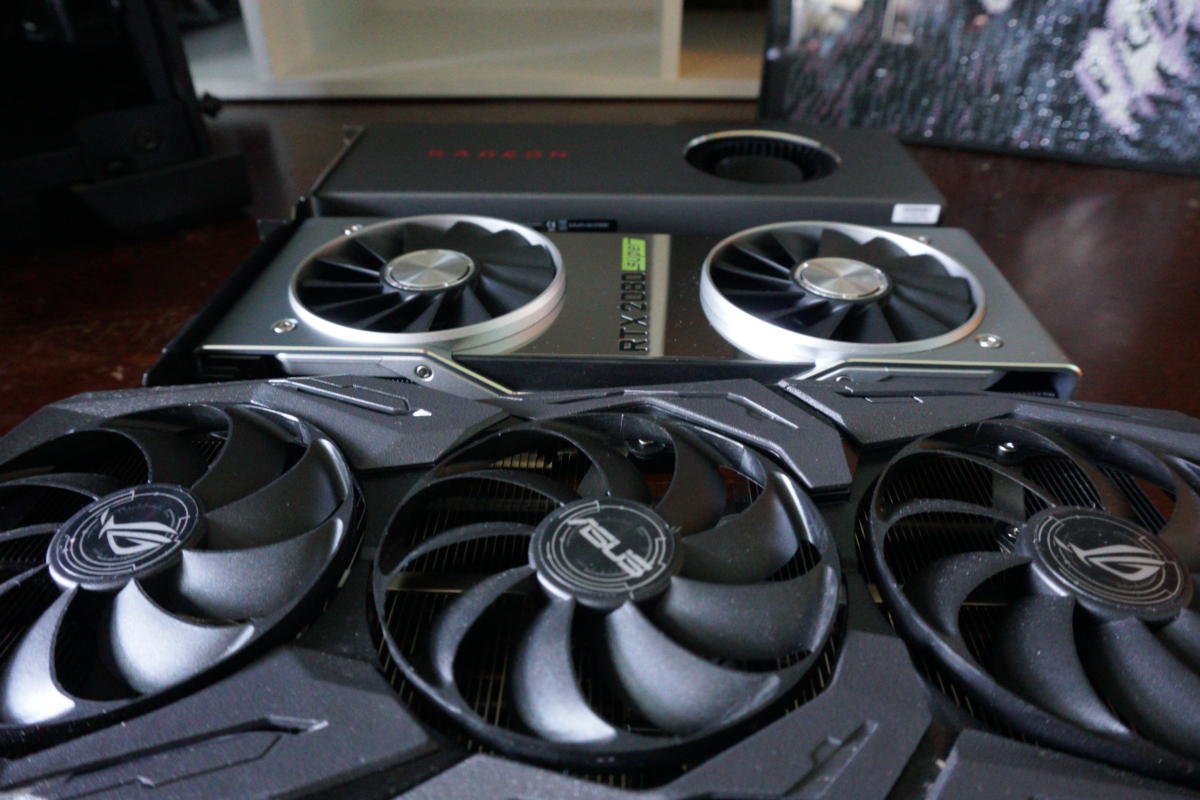 Brad Chacos/IDG
Brad Chacos/IDG From strawma to rear: A custom Asus ROG Strix graphics card, Nvidia's GeForce RTX 2080 Super Founders Variant, and AMD's Radeon RX 5700 reference book card.
Reference artwork card game: Pros and cons
"Reference" graphics card game utilize designs crafted away AMD and Nvidia, the companies that produce and supply the actual graphics processing units (GPUs) at the heart of the hardware. They subsist to ensure a baseline level of quality, and to help get more graphics cards quickly come out of the closet the door when new GPUs launch. Customized cooling solutions take longer to orchestrate. That brings up the first-year consideration: If you want to get a hot new GPU the instant it releases, a reference point innovation may be your entirely option, as was the case for the first month of the Radeon RX 5700's past launch.
Traditionally, reference designs deployed single-fan, blower-style coolers that blast the hot air generated by the GPU out of the rear of your PC case, via external respiration holes around the square bracket's video display connections. AMD's Radeon reference designs stick with this legacy, though the company (generally) lets its partners handle consumer sales. You'll ordinarily buy Radeon reference card game from companies like XFX, Sapphire, or Asus rather than AMD itself.
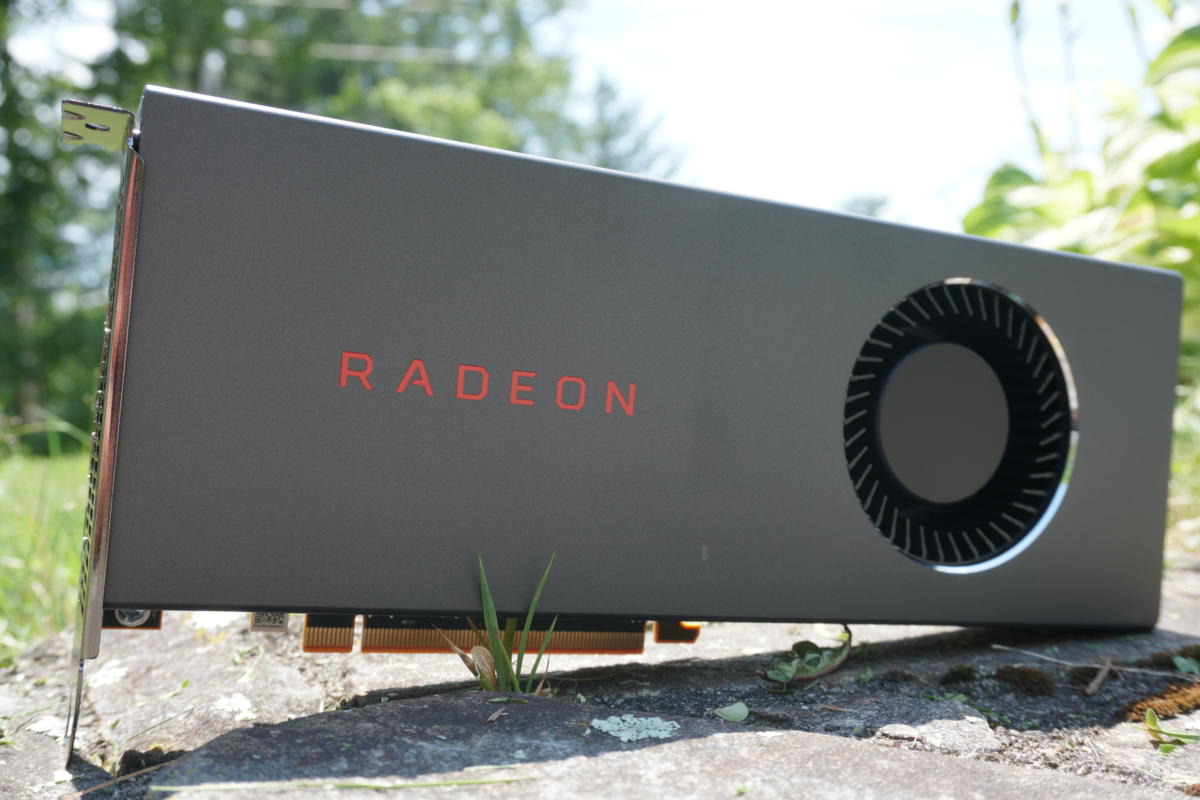 Brad Chacos/IDG
Brad Chacos/IDG AMD's Radeon RX 5700 reference card uses a blower-mode contrive.
The self-contained nature of blower-style designs—they expel ignite down of your case, quite than dumping it into your case—make them shine in scenarios where space or flow of air is limited. If you're building in a young strain factor case or running a powerful rig with multiple graphics cards installed next to each other, cetacean-style cite card game eliminate voltage overheating concerns.
There's a performance tradeoff, however, as cetacean-manner designs often run much hotter and louder than coolers with axial fans that dump the hot air into your case. (Equate the Radeon RX 5700 reference identity card's temperatures versus the temperatures of the Sapphire Pulse RX 5700, an affordable custom dual-lengthwise design with a mere $10 premium.) GPUs can hit higher clock speeds at lower temperatures, so reference designs can leave potential performance on the table.
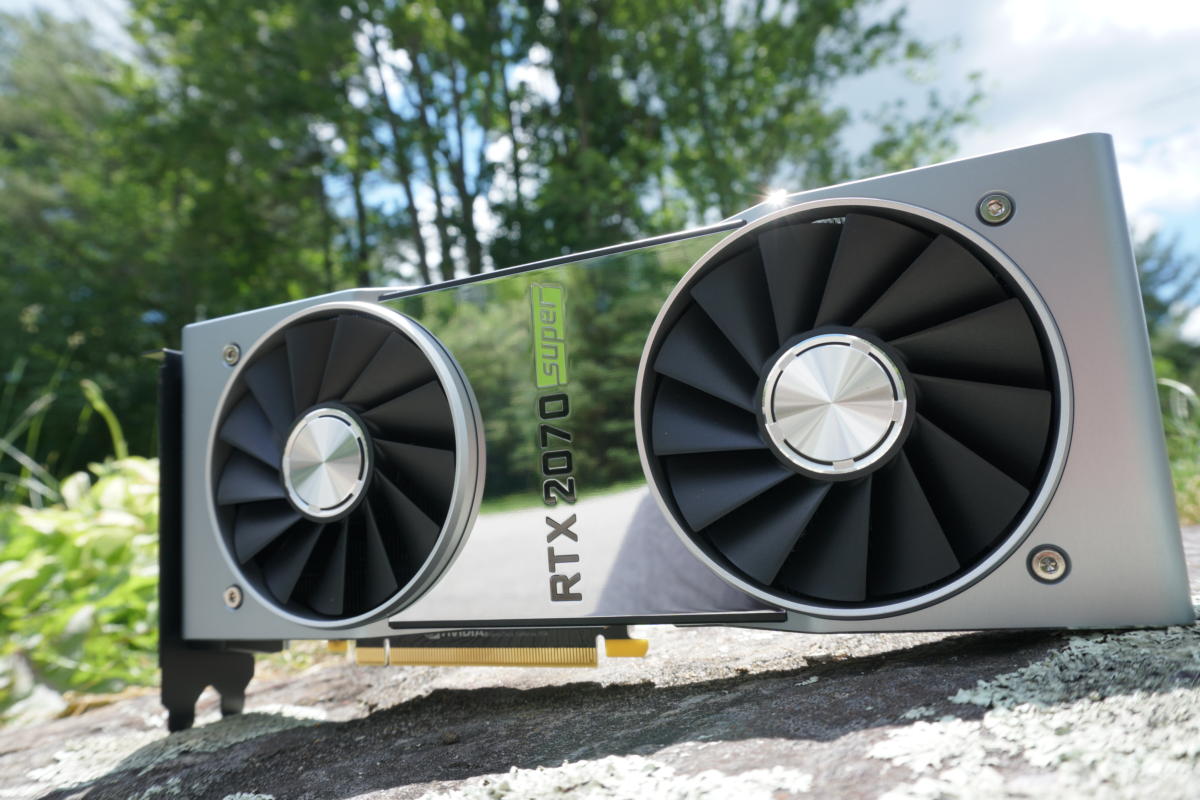 Brad Chacos/IDG
Brad Chacos/IDG Nvidia's GeForce RTX 2070 Super Founders Edition.
Nvidia's current GeForce RTX 20-series nontextual matter card game bucked custom aside switching to a double-axial fan design. Nvidia also recently began selling reference designs itself in the form of luxurious, metal-clad GeForce "Founders Edition" graphics cards, ending the trend of allowing AIB partners like EVGA and Asus to deal reference cards.
Founders Edition cards look for beautiful and do well, but Nvidia doesn't overclock its cards as aggressively every bit numerous custom-made AIB models do. Also, while the dual-axial cooler is a elephantine improvement over blower-title reference designs, custom cards still a great deal run into lower temperatures.
Compatibility is a big get ahead for extension card game. Some AMD's cetacean-dash graphics cards and Nvidia's Founders Edition models stick to standard distance dual-one-armed bandit dimensions, meaning they should harmonise the vast majority of PCs. And if you're a water-cooling partisan, the universal availability of reference designs means that you can more easily find oneself custom waterblocks for them. Finding waterblocks for picture card game with custom PCBs is a great deal to a greater extent smasher-or-miss.
Finally, reference nontextual matter card usually lack extra features you posterior see in custom models, such as customizable RGB LED lighting and plural-BIOS switches.
Bespoke graphics cards: Pros and cons
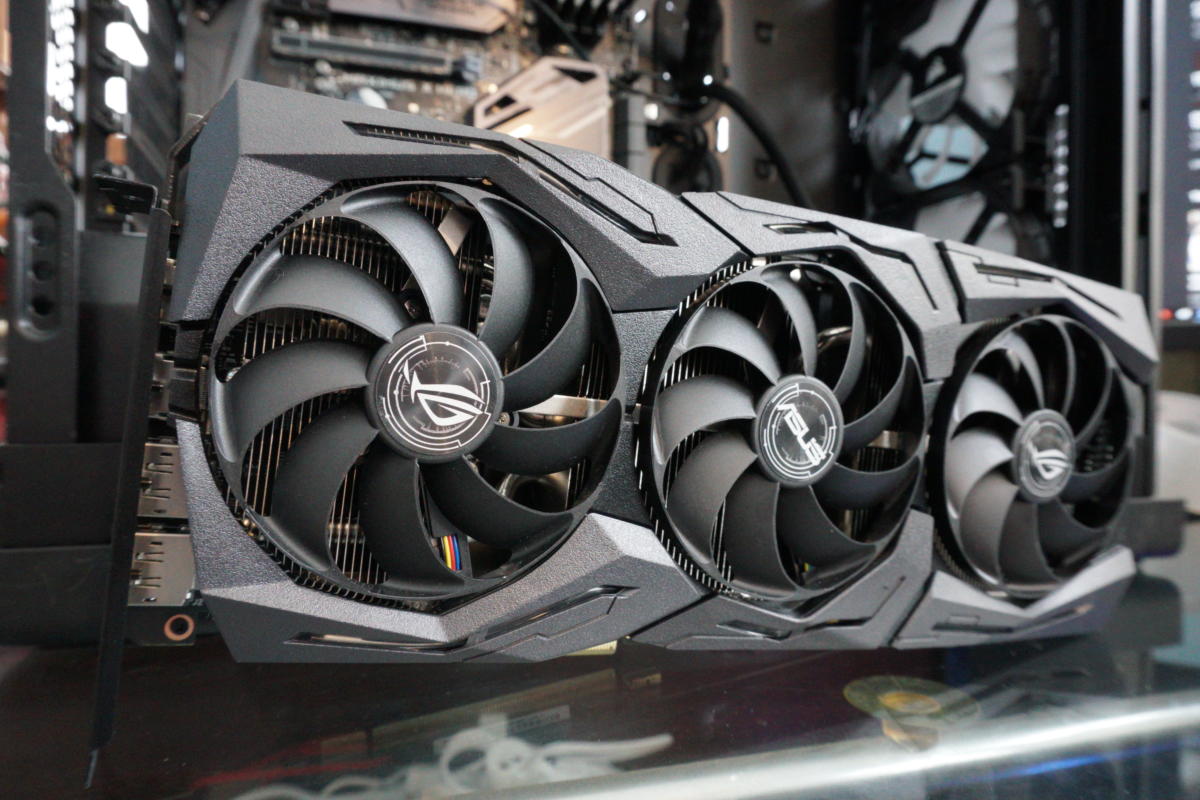 Brad Chacos/IDG
Brad Chacos/IDG The Asus ROG Strix 1660 Ti spares no expense on its cooler design.
Most custom graphics cards use lengthwise lover designs that expel the hot air generated by your GPU hindmost into your case, which is then whisked impermissible of your system by your case fans. (Generally, you'll lack at any rate two case fans in your PC if you'Re gaming: one intake, one exhaust.) That's a worthy matter! As explained in the finale section, axial coolers generally pass ice chest than blower-style fans, and they'atomic number 75 usually quieter too.
Ice chest temperatures rent out your graphics card's GPU sustain higher time speeds for longer. Many custom graphics card game also transport overclocked from the factory. That combination lets many (maybe to the highest degree) custom graphics cards achieve higher out-of-the-boxful performance than mention designs.
Given all that, and precondition that just about people have only a single artwork card in their PC (so overcrowding isn't a better concern), custom graphics cards are unremarkably the best option for most people.
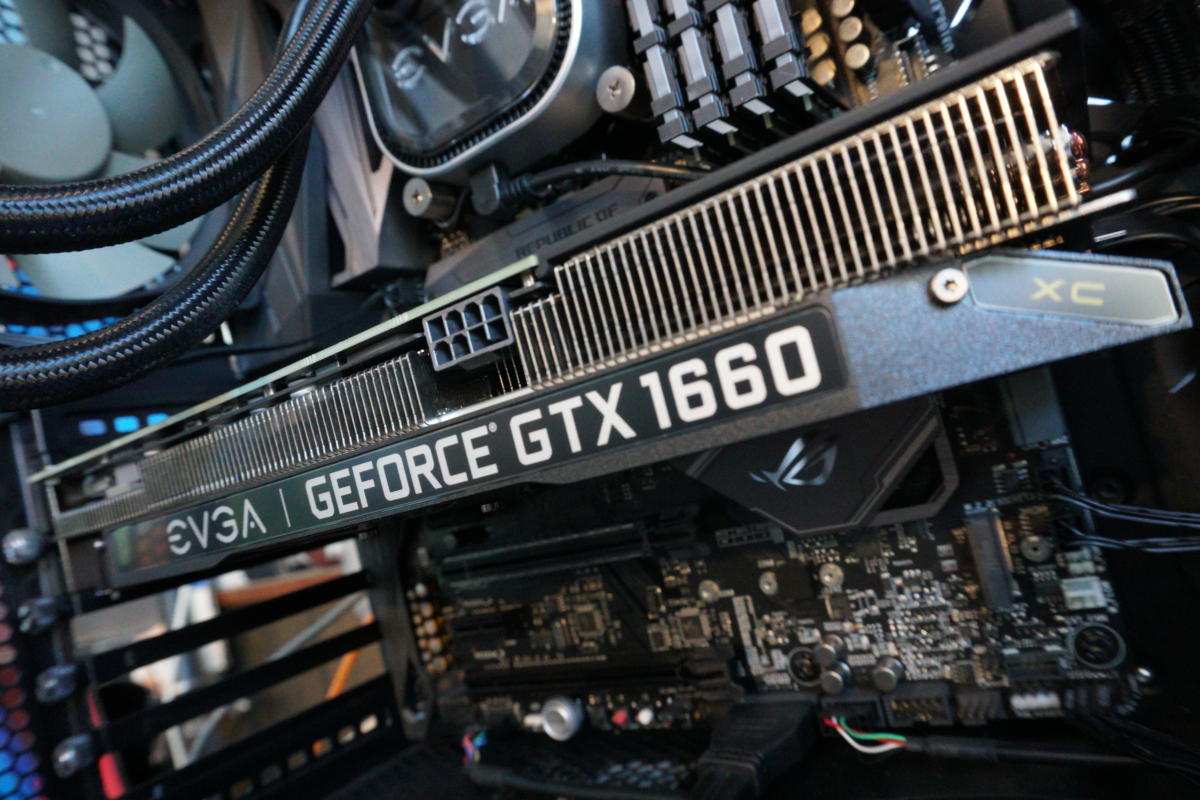 Brad Chacos/IDG
Brad Chacos/IDG EVGA's GeForce GTX 1660 Ninety.
The timbre of custom graphics cards varies greatly dependant on the vendor and how much you want to spend. Custom graphics cards range from more basic designs with blood line specifications and decent coolers to monstrous behemoths with powerful overclocks and finely tuned everything. Rattling high-ending custom graphics cards can demand significant monetary value premiums. In general, the more money you spend, the more goodies you'll get.
Like what? Straight-grained better cooling, for one. You'll get custom card game with one, two, or even three axial fans, and some high-end models incorporate squinched-loop liquid coolers. Pricier custom-built cards pack beefier heatsinks for better heat dissipation, and some add special hardware—like sensors, extra thermal pads, and dedicated VRM or memory chipping cooling—to drive temperatures even lower, or scale down noise levels. Some models, like EVGA's GeForce RTX 20-serial publication "FTW3" lineup, tie individual buff speeds to unlike sensors, so that each bit of hardware gets devoted cooling based along their caloric of necessity.
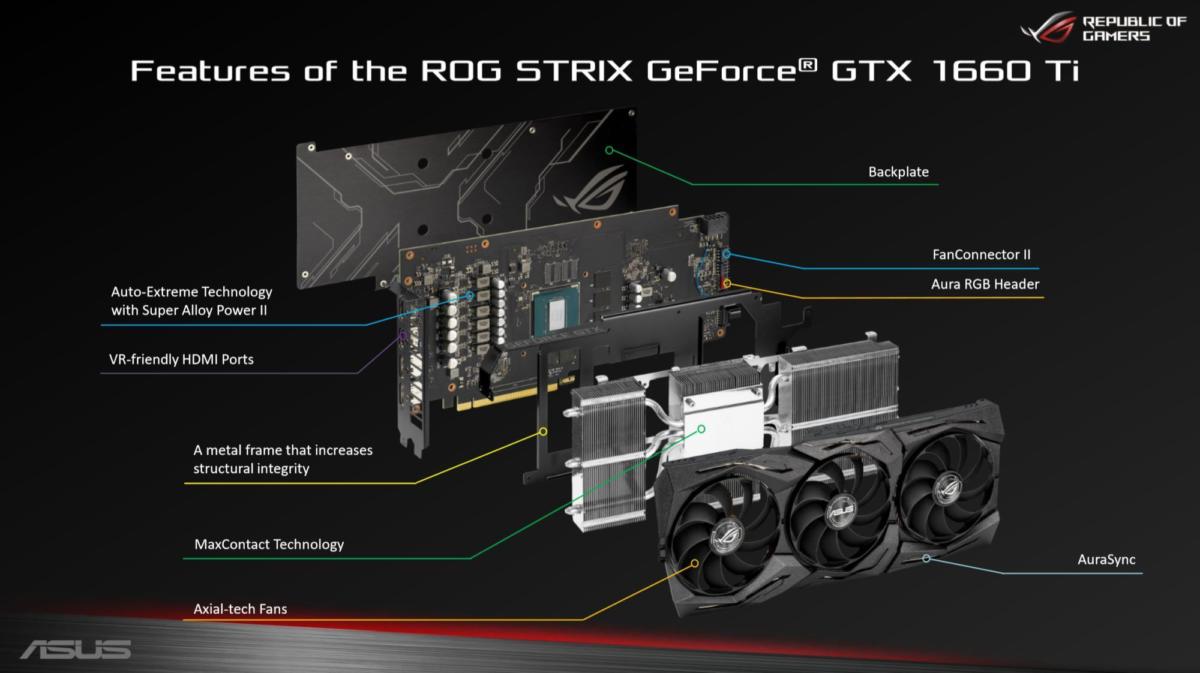 Asus
Asus A blowout render of the Asus ROG Strix 1660 Cordyline terminalis's cooler design.
If you're an overclocking enthusiast, you tail find custom graphics card game that hop-skip the reference PCBs designed by Nvidia and AMD to offer fully bespoke ironware intended to beget you the best possible performance. You toilet find models with beefed-up power delivery systems, fuse protection, additional PCB layers, and plural-BIOS switches for different public presentation profiles and easy recovery from overclocking disasters. These tend to comprise Thomas More expensive, though.
Of run over, more general extra features are other big advantage for custom graphics card game. Custom RGB LED lighting is essentially table bet at this target. You can too find nice tone-of-life upgrades like metal backplates, additional expose connections, fan headers to tie a case fan's speed to your GPU temperature, replaceable shrouds or axial fans, and many. The sky's the limit, though many AIB vendors require you to install their proprietorship software to access some of the features or overclock your nontextual matter bill of fare.
 Brad Chacos/IDG
Brad Chacos/IDG The Lazuline Heart rate Radeon RX 5700 includes some a metal backplate and a dual-BIOS switch for its $10 premium over reference cards.
The biggest downside to custom art card game? They almost always cost much reference models. Most multitude would live happy with a custom design that costs $10 or $20 more than reference pricing, though you'll often motivation to expend more that if you desire to a greater extent advanced features OR plan on serious overclocking endeavors.
Spending more usually doesn't get you much more existent in-game performance, however. Modern GPUs tend to advertize every bit hard as possible out-of-the-box under any decent cooler.
Custom card game interject a wide range of form factors, for better and worsened. If you require single-time slot designs, shorter boards for mini-ITX boards, surgery beastly triple-slot temperature reduction solutions, usance graphics cards are the only way to fly. But because of that variance, you'll also want to check a custom card's physical dimensions before breaking verboten your credit card. Nil hurts worse than purchasing a new graphics plug-in and discovering it doesn't quite fit in your PC.
Incu the go-to-meeting GPU for you
Of naturally, before you can quality which custom graphics card to buy, you need to live which GPU you should buy. A basic 1080p monitor and an ultra-fast 4K display require very polar hardware to game along. Beginning your journey over at PCWorld's guide to the best artwork cards for PC gaming. We deliver battle-tested, none-gimcrackery buying advice for all budget and video display resolution, complete with links to our comprehensive reviews for each GPU.
Happy gaming!
Remark: When you purchase something after clicking links in our articles, we may earn a small deputation. Translate our affiliate connexion policy for more details.
Brad Chacos spends his days digging through background PCs and tweeting as well much.
Source: https://www.pcworld.com/article/397944/reference-vs-custom-graphics-cards-which-should-you-buy.html
Posted by: blackwastain.blogspot.com


0 Response to "Reference vs. custom graphics cards: Which should you buy? - blackwastain"
Post a Comment